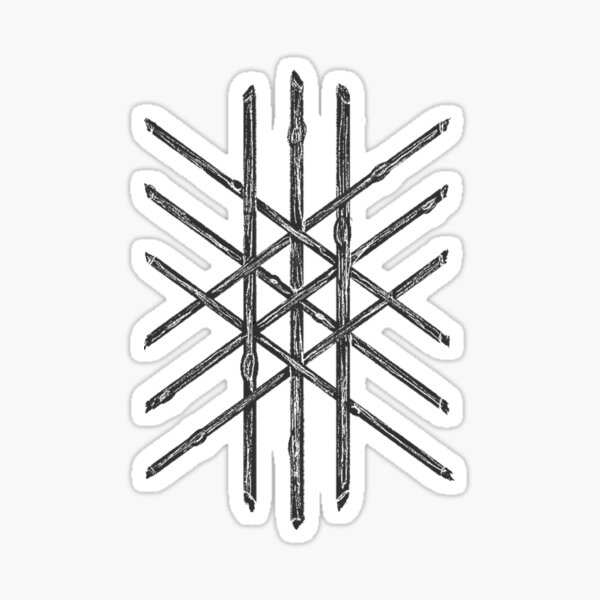
Here I am trying to untangle the “wyrd” web surrounding this symbol. *Ba Dum Tsss*
All puns aside, this is a subject of many arguments surrounding the origins of this symbol. Some say it’s Viking. Others say that it is as old as time. The big majority argue that it’s a ’90’s thing…. and some don’t care.
Surprisingly enough, the first depiction of this symbols appeared sometime in the early ’90’s. 1993 to be more specific, in a book written by Jan Fries. A German occultist in the book Helrunar: A Manual of Rune Magick.
The symbol itself has 2 forms, one organic (made of 9 woven twigs) and a more geometric form with straight sides. Both forms have caught very well to the large public, people that follow the Norse religion and even other pagans.
My opinion of why the Web of Wyrd symbol caught up so well is the fact that it just looks so good. It’s a simple representation of something that has been already there for a long time – Fate.
Simpler forms of this design have been discovered in other ancient civilizations, being it a knot or just a string.
Traditionally Fate needed a depiction for the common person or artist to visualise something that most people of the past believed in.
There is even a Norn with the name of Wyrd – the one that represents the past.
The other 2 Norns are Verðandi which represent the present and Skuld for the future – the web tying all 3 instances of a person’s existence together.
The Wyrd in a few words means Fate of the past. Every culture and civilization on the face of the Earth since the beginning of time believed in it, furthermore, in the Norse culture, the Wyrd is the shape of a person’s past and how their actions have woven the net of their fate. It to be confused with Orlog, which is the the predestined fate of a person and what must happen.
The Web, as I mentioned before, is a modern creation and represents the string woven by all three Norns, past, present and future.
It is now commonly used in all sorts of jewellery and decorations.
To be perfectly honest with you, I like it!
It’s a nice addition to an already rich cultural symbolism.
I like it’s paradoxal complex simplicity, which, I believe is the perfect way to describe fate.
| Cookie | Duration | Description |
|---|---|---|
| cookielawinfo-checkbox-analytics | 11 months | This cookie is set by GDPR Cookie Consent plugin. The cookie is used to store the user consent for the cookies in the category "Analytics". |
| cookielawinfo-checkbox-functional | 11 months | The cookie is set by GDPR cookie consent to record the user consent for the cookies in the category "Functional". |
| cookielawinfo-checkbox-necessary | 11 months | This cookie is set by GDPR Cookie Consent plugin. The cookies is used to store the user consent for the cookies in the category "Necessary". |
| cookielawinfo-checkbox-others | 11 months | This cookie is set by GDPR Cookie Consent plugin. The cookie is used to store the user consent for the cookies in the category "Other. |
| cookielawinfo-checkbox-performance | 11 months | This cookie is set by GDPR Cookie Consent plugin. The cookie is used to store the user consent for the cookies in the category "Performance". |
| viewed_cookie_policy | 11 months | The cookie is set by the GDPR Cookie Consent plugin and is used to store whether or not user has consented to the use of cookies. It does not store any personal data. |